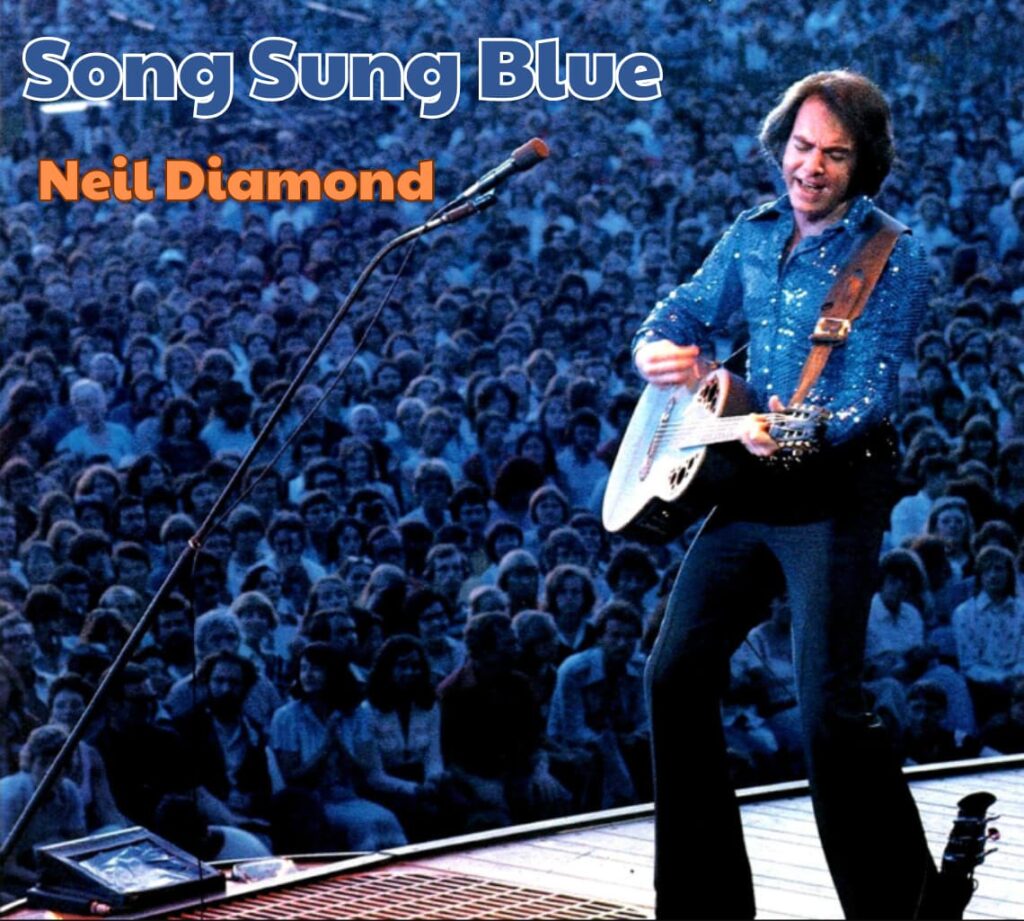
A Simple Tune for Complicated Hearts: The Enduring Charm of “Song Sung Blue”
Ah, Neil Diamond. Just uttering that name conjures images of sparkling stage lights, a booming baritone, and a career spanning decades that has touched the very fabric of popular music. Among his vast and beloved catalog, there are few songs that resonate with such a universal, yet deeply personal, sentiment as “Song Sung Blue.” Released in 1972 as the lead single from his album “Moods,” this deceptively simple melody quickly soared up the charts, becoming a quintessential hit of the era. It peaked at an impressive number one on the Billboard Hot 100 and also reached number one on the Easy Listening chart, a testament to its widespread appeal across various demographics. It was a song that you couldn’t escape on the radio, a gentle earworm that burrowed its way into the collective consciousness, offering solace and understanding in its tender embrace.
But what truly sets “Song Sung Blue” apart, even all these years later, is not just its chart-topping success, but the quiet wisdom it imparts. At its heart, it’s a song about the human experience of sadness, a gentle acknowledgment that sometimes, we simply need to express our melancholy. It’s not about wallowing in despair, but rather, about giving voice to those blue feelings, allowing them to be heard and, in doing so, perhaps beginning the process of healing. Diamond himself has often spoken about the song’s origins, describing it as a moment of simple inspiration. He wasn’t grappling with a profound personal crisis when he wrote it; instead, he was merely observing the everyday tapestry of emotions that we all weave. He saw the need for a song that could be sung when one felt low, a musical companion for those moments of quiet introspection. It’s a testament to his genius that he could distill such a universal concept into such an accessible and heartwarming tune.
For those of us who came of age during that vibrant era of the 1970s, “Song Sung Blue” carries with it a particular weight of nostalgia. It was the soundtrack to countless drives, quiet evenings at home, and even the background hum of our earliest romantic endeavors. You remember humming along, perhaps not fully grasping the nuanced depth of its meaning then, but certainly feeling its comforting embrace. It was the kind of song that your parents enjoyed, that your grandparents tapped their feet to, and that somehow, effortlessly, transcended generational divides. It wasn’t flashy or revolutionary; it was simply honest. It spoke to the moments when life felt a little heavy, when the bright colors seemed to fade just a bit, and all you wanted was a quiet space to feel.
The beauty of “Song Sung Blue” also lies in its elegant simplicity. The melody is unadorned, almost lullaby-like, allowing Diamond’s rich, resonant voice to take center stage. The lyrics are straightforward, devoid of complex metaphors or intricate narratives. “Song sung blue, everybody knows one,” he croons, and in that simple line, he captures the shared human experience of sorrow. We all have our “blue” songs, those melodies that resonate with our own moments of sadness, be it a lost love, a missed opportunity, or simply the inexplicable weight of a cloudy day. Diamond doesn’t offer solutions or platitudes; he simply offers companionship. He acknowledges the feeling, validates it, and provides a gentle, melodic space for it to exist. This profound empathy is what has allowed “Song Sung Blue” to endure, becoming a timeless classic that continues to offer solace and understanding to new generations of listeners. It’s a quiet masterpiece, a gentle reminder that even in our bluest moments, there’s always a song to be sung, a feeling to be acknowledged, and ultimately, a glimmer of hope to be found.